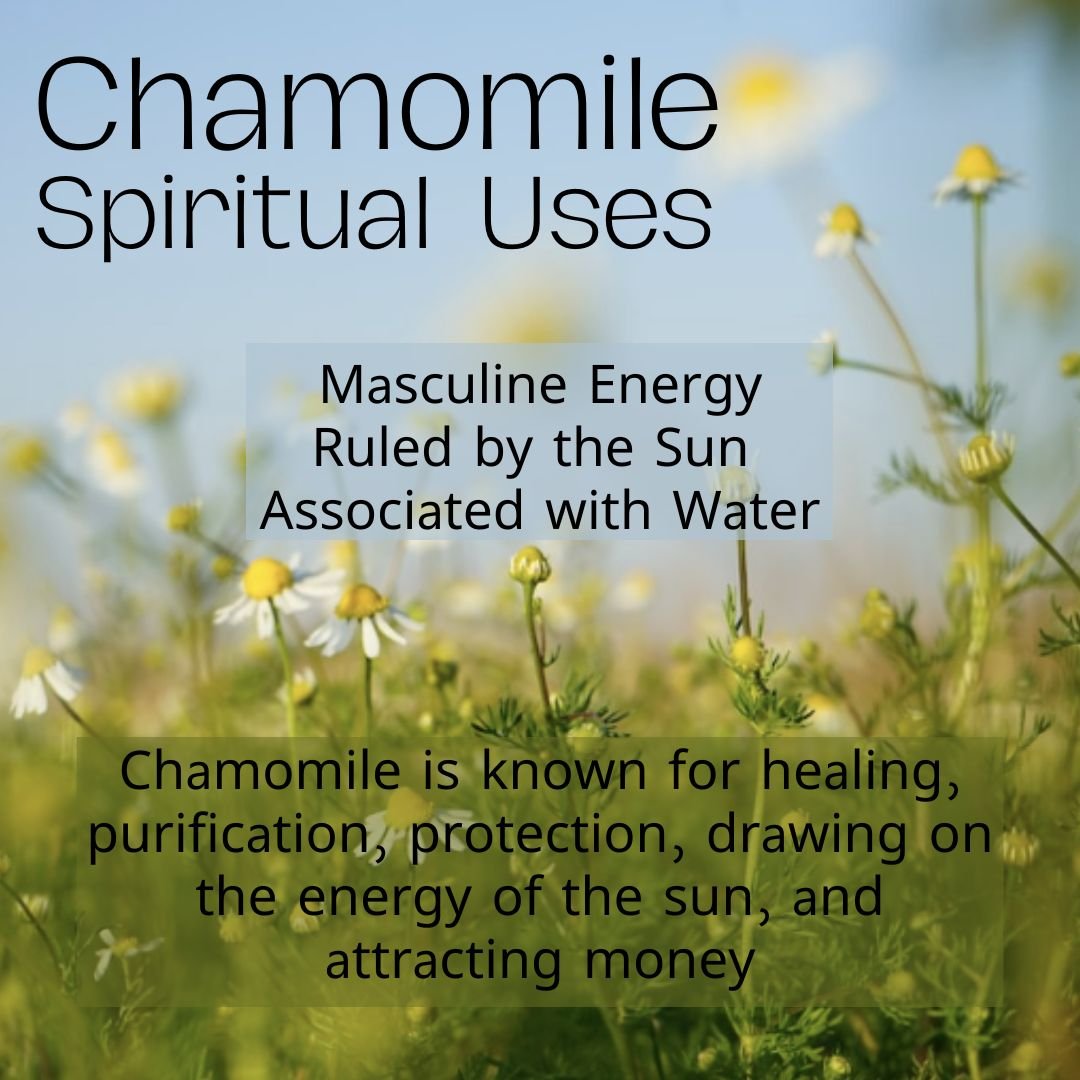
Chamomile
At my house all of these April showers are bringing…Chamomile! Mine is just starting to come up, and although it won’t flower for a couple months I’m excited for it. Chamomile is one of my favorite and most used herbs.
-

May Herb of the Month
Chamomile is in the Asteraceae (daisy or sunflower) family just like Dandelion last month
-

Chamomile Name and Variety
Chamomile’s name comes from a Greek word meaning “earth apple” - which makes a lot of sense if you taste it's earthy fruit flavor. The type we typically use is German Chamomile (Matricaria chamomilla), however, Roman chamomile can be used interchangeably and is perennial.
-

Chamomile Identification
Small flowers (no more than 2-3cm) with a rounded yellow base and white florets surrounding. Thin green stems and wispy leaves that grow 1-2ft high. The scent and flavor are very earthy combined with a fruity mixture of apple, honey, and pineapple.
-

Chamomile in the Wild
Chamomile is native to Eurasia and Africa, but now grows wild in other parts of the world including areas in North America. It was introduced to North America by German settlers who brought it for medicine in the 19th century.
-

Chamomile in History
Chamomile was found in Egyptian hieroglyphics over 2,000 years old. They believed it could cure most ailments, and also used it in beauty products. It’s believed Tutankhamun wore sandals decorated with chamomile, and they are also found in this mural from Amarna, where he lived. (Image from Amarna mural in Egypt)
-

Brewing with Chamomile
Brewing with Chamomile - Chamomile was used in Europe in the brewing process as a bittering agent throughout the Middle Ages – it is still used by many in the process today. In Spain, they used Chamomile to flavor their brandy. Beer and spirits made with chamomile are still available in many places – including the Chamomile Saison from @threetigersbrewing here in Ohio
-

Chamomile in Literature
Not just a benefit to humans, you may remember that Peter Rabbit’s mother fed him chamomile tea after his run-in with Mr. McGregor
-

Chamomile Medicinal Properties
Chamomile has drying and cooling properties. It is in Class 1, making it very safe. Contains terpenes: limonene, pinene, and eucalyptol as well as others.
-

Chamomile in Medicinal History
Medicinal History - Chamomile is one of the Nine Sacred Herbs found in the Lacnuga (remedies) and old Anglo Saxon medical book. Hippocrates wrote about Chamomile in 400 BCE calling it a miracle cure. German healers called it “alles zutraut”, or capable of anything.
-

Chamomile Medicinal Uses
Works as: antacid, anti-nausea, anxiety reducer, anti-arthritic, reduces bleeding, and is a mild sedative
Helps: constipation, cold and flu symptoms, colic, gallbladder, indigestion, inflammation, muscle cramps, reduces gas, sweating, and fever.
Heals: burns, skin and wounds, & sore throat
-

Chamomile Remedies
A cup of chamomile tea is more than a drink - it's an eyewash that heals styes, conjunctivitus, blocked tear ducts or other eye issues
Steep chamomile in hot water until it cools
Put some of the chamomile wash in a small glass, hold to eye and tip to wash several times
Repeat throughout the day
-

Chamomile Spiritual Uses
Chamomile has masculine energy, is ruled by the sun, and is a water element
It’s known for healing, purification, protection, drawing on the energy of the sun, and attracting money
-

Chamomile in Egyptian Spiritual Practices
Egyptians worshiped chamomile as a representation of the sun, associated with Ra (sun god). Chamomile was also used ceremonially in the mummification process.
-

Chamomile in European Mythology
Germanic tribes dedicated chamomile to their god of Light, Baldur. It’s said that his brow appeared to look like wild chamomile

